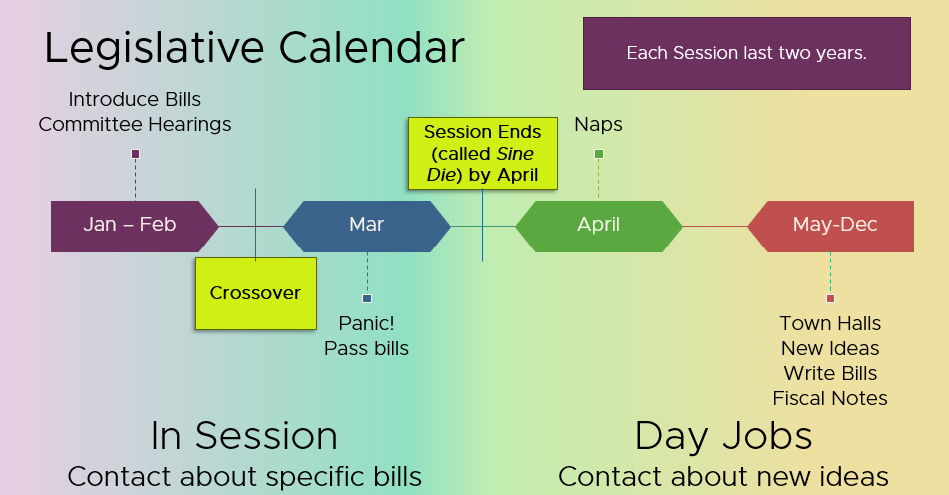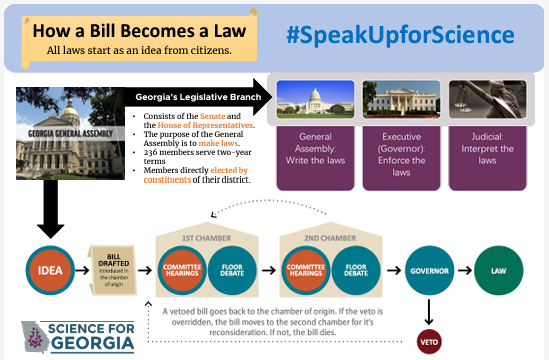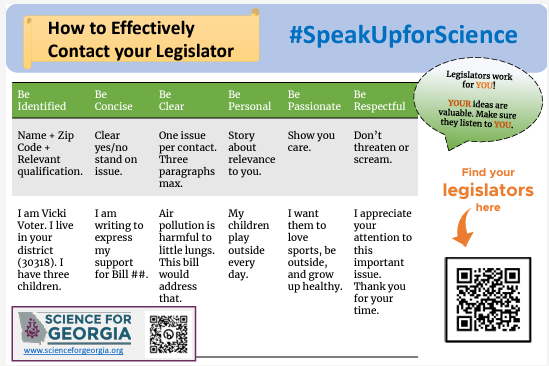Okay, let’s take a step back. If we want to advocate for change, we are going to need a refresher on the systems within which change happens .
The government in the United States operates on multiple levels, from federal to local. It consists of three branches:
- Legislative (comprising Congress),
- Executive (led by the President),
- Judicial (headed by the Supreme Court).
Each unit has distinct responsibilities, creating a system of checks and balances to uphold democratic principles. At state and local levels, elected officials play crucial roles, allowing citizens to engage in community decision-making.
What does this mean for constituents who want to advocate for change? Well, it certainly plays a role in HOW you go about making a plan of action and figuring out what a SOLUTION to this problem will look like for your group/community!
Georgia General Assembly Timeline
The Georgia General Assembly consists of a House and a Senate. A “legislative session” lasts for two years. The General Assembly is actively “in session” from early Jan to late March every year. During the other times of the year, the legislators are typically working their other jobs – as they are not paid enough to only be assembly members.
When they are “in session” it is a good time to reach out about active bills and specific asks. When they are out of session, it is a good time to reach out about new ideas.

How a Bill Becomes a Law
Schoolhouse Rock said it best…
When someone has an idea for a new law, they write it down and share it with their representatives in Congress. This written idea is called a “bill.” The bill then goes through several steps in the House of Representatives and the Senate. Committees in each chamber review the bill, suggest changes, and vote on whether to approve it.
If the bill gets enough support, it goes to the full House and Senate for a vote. If both chambers agree, the bill is sent to the President. The President can either sign it into law or veto it. If the President signs it, the bill becomes a law and is applied to the entire country.
Georgia General Assembly Terms
When looking at a bill on the General Assembly website – it has many statuses attached to them. Here is a glossary of terms for each step along the bill process.
Hopper: This bill has been placed in the hopper, the symbolic place where bills are held before they are read.
Prefiled: A proposed change in legislation that is filed before the legislative session begins.
Read and Referred: The bill was read in the chamber and referred to committee.
First Read House/Senate: On the first legislative day after the bill is filed, the bill is formally introduced to legislators through its “First Reading.” The bill’s title is read aloud in the chamber of the legislator who authored it. After the bill is read, the presiding officer assigns the bill to a standing committee.
House/Senate Action: The bill has been read and is awaiting action in the House (i.e. awaiting assignment to a committee).
Second Readers (House): The bill is read for a second time the day after it is introduced. This is largely ceremonial as it is already in committee.
Read Second Time (Senate): The bill is read for a second time, and unlike in the house, this happens after the bill passes committee.
Recommitted: The bill, which has been in one committee, has been reassigned to the same or a different committee. A motion to recommit may be proposed when a particular standing committee refuses to report out a bill. It may also be raised when a bill has reached the stage of floor debate and amendment, and members feel that for whatever reason the bill should be returned to committee for further study.
Committee Favorably Reported: The bill has been recommended for a floor consideration in the chamber (it has been voted out of committee and is ready for a vote by the full chamber).
Committee Favorably Reported By Substitute: An alternative version of the bill was introduced within the committee considering the original bill. If the committee favorably recommends the substitute bill, that version is reported to the full chamber for floor consideration.
Third Readers (House Only): The bill has passed through committee and is read a third time before being up for debate on the House floor.
NOTE – “Rules” is a place that bills can be held up and never moved to the full chamber for a vote. Lots of “horse trading” goes on to get bills moved out of Rules.
Tabled: The bill was removed from floor consideration, together with all motions attached to the bill at the time. Tabling a bill postpones further consideration and action on measure until a later time, at which time it can be brought back before the floor or committee through approval of a motion “to take from the table.”
Taken from Table: The bill has been brought back to the floor
Withdrawn, Recommitted: The bill was withdrawn from the floor in the chamber and sent back to committee.
Passed/Adopted: The bill was passed in the chamber.
Passed/Adopted By Substitute: An alternative version of the bill was either introduced and recommended in committee or was introduced to the floor after committee and passed. There is no requirement that the floor substitute must be considered in committee, which leads some critics of the device to charge that it bypasses the committee system.
House Immediately Transmitted to Senate: After the bill has passed in the house, it was sent to the Senate for immediate action.
Senate Transmitted House: The bill was sent to the house.
The bill is placed into a committee, must be voted out of that committee, get put on the calendar, and then pass a “floor vote”
Conference Committee Appointed: When the 2 houses can’t agree on a bill, a Conference Committee is created. It’s filled with 3 members of each chamber tasked with finding a compromise. Once they reach a compromise, the legislators present their reports to their respective chambers for approval.
House Disagreed Senate Amend or Sub: The Senate has amended a bill that began in the House and the House disagreed with this amendment.
House Engrossed: In the House only, a motion to engross can be made at the time of a bill’s introduction. If two-thirds of those voting agree, the bill is engrossed, which prohibits any amendments during committee or floor consideration.
Senate Engrossed: A proofreading and verification of a bill or resolution to ensure that the copy being officiated is identical with the version of the bill that passed that house.
House/Senate Insisted: If the senate passes a changed version of a house bill (or vice versa) – the originating chamber can insist on their version of the bill.
Sent to Governor (House/Senate): The bill has passed in both houses and has been sent to the Governor to sign (House is for House Bills and Resolutions, Senate is for Senate Bills and Resolutions).
Signed by Governor: This bill has been passed and enacted to become law. After a bill has passed both chambers, the governor has forty days to decide whether to sign the bill into law, veto the bill (in which event it is returned to the house where it was introduced for veto override consideration), or do nothing (which allows the bill to become law automatically at the end of the forty days).
Act #: The bill has now become an act.
Effective Date: The bill has been signed into law and is effective as of this date.


